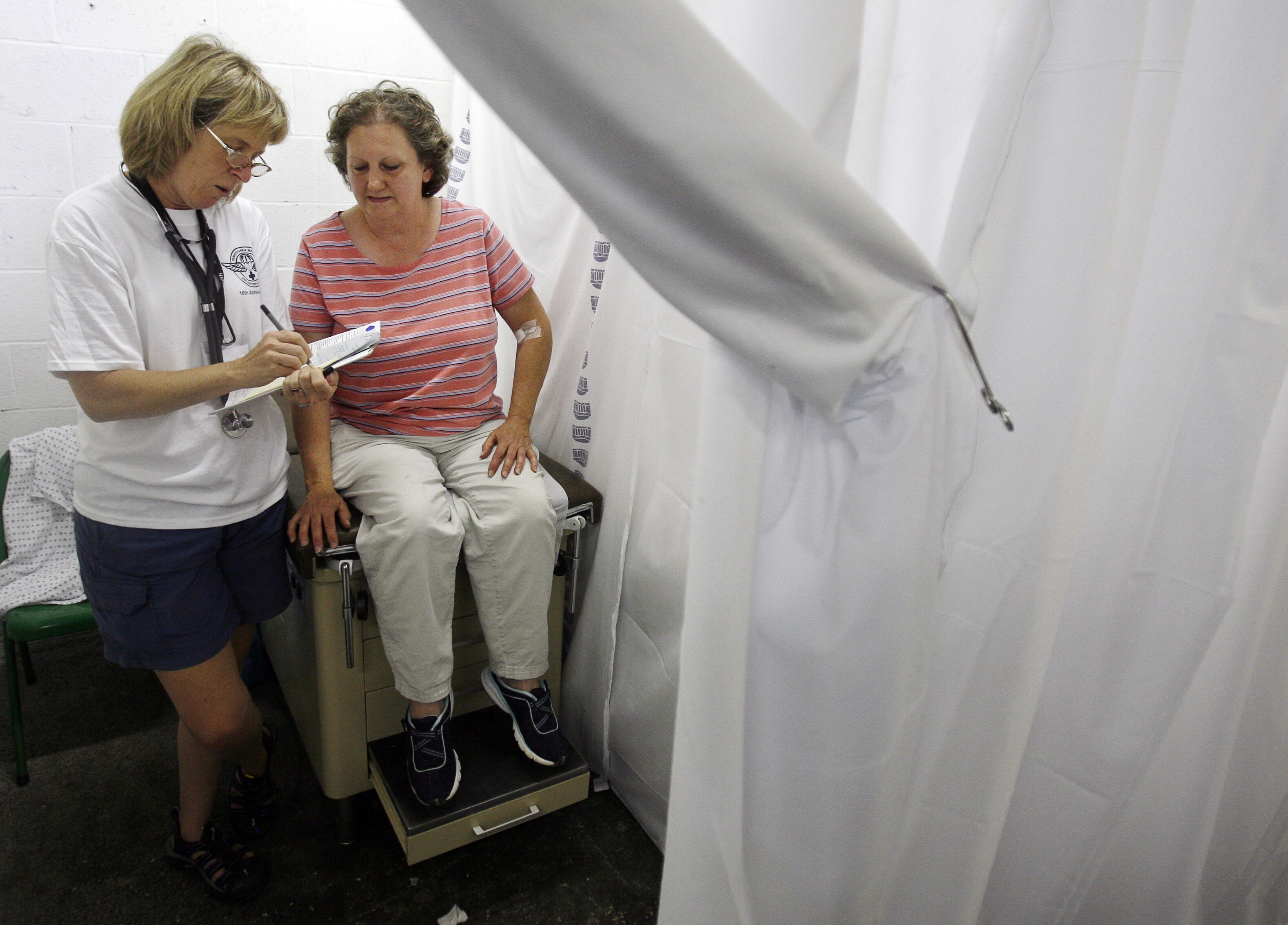How mental health stigma stops people seeking treatment

Stay up to date:
Future of Global Health and Healthcare
The fear of being stigmatised or socially sanctioned and disgraced governs many aspects of human behaviour. In many cases, the fear of stigma does not result in actual behavioural change but rather leads individuals to hide certain behaviours or actions (for example, smoking in secrecy). Despite the centrality and importance of stigma in influencing human behaviour, formal treatments of it in economics have been limited. However, it is commonly agreed that stigma exists and influences behaviour in many spheres.
In 2012, 18.6% of all US adults had a recent mental illness.1 The prevalence is similar in other developed countries. Studies show that public knowledge about mental health illnesses has recently increased, but considerable stigmatisation of individuals with mental health illnesses remains. For example, mental illness is ranked near the bottom of other illnesses in terms of public acceptance (Hinshaw 2007). As a result, the negative effects of stigma have been hypothesised to be as harmful as the direct effect of mental disorder (Hinshaw 2007). According to the US Surgeon General report, stigma is the main barrier to mental health care: “It deters the public from seeking, and wanting to pay for, care” (US Department of Health and Human Services 1999). Hence, stigma could prevent individuals from seeking care, leading to more intense (and perhaps less successful) and expensive treatment options later (Kupfer et al. 1989). In our research, we set out to show the existence and consequences of stigma in the case of mental health (Bharadwaj 2015).
Modelling stigmatisation
In line with a classic definition of stigma (Goffman 1963), we build a simple model in which agents with traits that are stigmatised by society want to hide these traits from others. In particular, agents face costs if traits that are stigmatised if revealed publicly, but they also face costs for not reporting truthfully. However, in each situation where the agent is asked about whether she has a certain stigmatised condition (an example is a survey), she is unable to determine whether her answer will be made public (i.e., privacy concerns). Hence, coarse perception regarding the cost of truthful reporting can generate relatively greater misreporting for traits that are stigmatised, even on surveys where anonymity is assured.
We show evidence of this ‘hiding’ behaviour for mental health problems by comparing survey self-reports on diagnoses and mental health drug use to administrative data on prescription drug use from Australia. While there could be various drivers for the differences between survey self-reports and administrative data, our leading explanation is that if mental illnesses were not stigmatised, the difference between self-reported survey responses and objective administrative records should be statistically similar to other diseases. Our operational definition of stigma is quite broad, and aggregates causes such as shame, guilt, self-image, and concerns for social discrimination, but we are able to specifically separate out labour market discrimination concerns.
- We find that approximately 36% of individuals whom we observe with a diagnosis of depression self-report as not having a mental disorder.
The degree of misreporting is lower when individuals self-report prescription drug use for depression (20%).
- In contrast, people under-report other diagnoses, such as cardiovascular diseases and diabetes, about 18% and 11% of the time, respectively (14% and 13%, respectively, in the case of self-reported prescription drug use).
These differences are statistically significant
Our sample is unique in that about 25% of the population are migrants to Australia. When examining the degree of under-reporting by country of origin, our results suggest that individuals from Asia and the Middle East are more likely to under-report relative to individuals from Northern Europe or the Americas. There is also a steep age gradient in misreporting, with older people more likely to misreport than younger people. Males are more likely to misreport compared to females.
Figure 1. Percentage not reporting condition and prescription drug use
We provide suggestive evidence that stigma is likely to play a role in the decision to seek treatment by examining the characteristics of people who self-report as having mental health issues according to a commonly used measure (the Kessler Psychological Distress scale), but do not seek mental health treatment in the subsequent 12 months. The overlap of socioeconomic and demographic characteristics that predict both under-reporting conditional on seeking care and not seeking care conditional on a high probability of having mental health problems, is suggestive of the role that stigma plays in preventing health care seeking.
Non-stigma related hiding behaviours
It is important to recognise that not all forms of hiding behaviour or trait concealment are the result of stigma. For example, individuals might lie on a survey given by an employer by showing extra years of experience or misreporting other information, including mental health history, to get a higher wage or a promotion. This sort of strategic reporting could be motivated by an individual’s concern of stigma as well as labour market discrimination. Our results are interpretable as evidence of stigma in mental health if we assume that the labour market discrimination motive in misreporting is similar across various diseases, such as diabetes or hypertension. Hence, the relative excess misreporting in mental health is evidence of stigma. Importantly, our sample consists of a large number of non-employed individuals, mainly retirees, for whom we can plausibly claim that the labour market discrimination motive is weak. For this subsample, our reliance on the homogeneity of the labour market discrimination motive is mitigated.
There could also be a general concern about survey reporting error that is driven by inattention, recall, lack of clear communication between doctors and patients, etc. (see Bound et al. 2001 for a comprehensive list). Such general explanations for differences in survey and administrative data records lead us to test a few hypotheses.
- First, these general explanations might result in all diseases and conditions being under-reported to a similar extent. This is contradicted by the data.
- Second, differential misreporting remains when we change the recall window over which we compare survey reports to administrative data, suggesting that simple recall issues are not driving our results.
- Third, our results are robust to analysis that is akin to a fixed-effect model; an individual who is treated for both cardiovascular disease and depression, for example, is much more likely to under-report his mental health condition relative to his heart condition.
- Fourth, doctor fixed effects regressions leave the results largely unchanged; hence, doctor-specific communication strategies are not driving our results.
- Finally, while some anti-depressants might be used for conditions other than depression, institutional insurance reasons and other robustness tests suggest that this is extremely unlikely to be driving our results.
Our work complements a recent set of papers in economics that focus on stigma in the case of HIV (Thornton 2008, Derksen et al. 2014, Hoffmann et al. 2014, Ngatia 2011).2 Using randomised control trials, these papers highlight the role of incentives, information, and social networks in understanding and mitigating the negative consequences of HIV-related stigma. Our paper is also related to other papers that match self-reported health measures to administrative health records (Barker et al. 2004, Johnston et al. 2009). In a review of papers comparing self-reports to medical data, Harlow and Linet (1989) find that most papers focus on reproductive health; no examples of such comparisons in the mental health space are cited. Finally, our paper is also related to the literature examining the degree of misreporting in other government programmes and in surveys.3 In a general review of measurement error in surveys, Bound et al. (2001) discuss the possibility of ‘social desirability’ influencing how data could be misreported. Thus, our paper adds evidence to this literature on measurement error in surveys by providing evidence on misreporting along an important variable of public health concern. By contrasting with other diseases, we also posit a possible mechanism (stigma) for systematic excess under-reporting for socially undesirable traits. In that sense, our analysis is related to the literature seeking to document and understand social desirability bias using other methods in different settings (Coffman et al. 2013).
Concluding remarks
The most important facet of stigma that pertains to public health policy is the extent to which it might prevent individuals from seeking appropriate care. Our results show that stigma concerns can play a significant role in determining health care seeking behaviour in the case of mental health. To the extent that policy or broader market forces can reduce stigma in mental health, our conclusions suggest that this will lead to more individuals seeking and obtaining treatment, and eventually lessening the burden of the disease.
References
Almada, L, I M McCarthy, and R Tchernis (2015), “What Can We Learn About the Effects of Food Stamps on Obesity in the Presence of Misreporting?“, SSRN.
Baker, M, M Stabile, and C Deri (2004), “What do self-reported, objective, measures of health measure?”, Journal of Human Resources, 39(4), 1067-1093.
Bharadwaj, P, M P Pai and A Suziedelyte (2015), “Mental Health Stigma”, NBER Working Paper 21240.
Bound, J, C Brown, and N Mathiowetz (2001), “Measurement error in survey data”, Handbook of Econometrics, 5, 3705-3843.
Coffman, K B, L C Coffman, and K M M Ericson (2013), “The size of the LGBT population and the magnitude of anti-gay sentiment are substantially underestimated”, NBER Working Paper 19508.
Derksen, L, A Muula, and J van Oosterhout (2014), “Love in the Time of HIV: Theory and Evidence on Social Stigma and Health Seeking Behaviour”, Working Paper, London School of Economics.
Goffman, E (1963), Stigma: Notes on the management of spoiled identity, Simon and Schuster.
Harlow, S D, and M S Linet (1989), “Agreement between questionnaire data and medical records: the evidence for accuracy of recall”, American Journal of Epidemiology, 129(2), 233-48.
Hinshaw, S P (2007), The mark of shame: Stigma of mental illness and agenda for change, Oxford University Press, New York.
Hoffmann, V, J R Fooks, and K D Messer (2014), “Measuring and Mitigating HIV Stigma: A Framed Field Experiment”, Economic Development and Cultural Change, 62(4), 701-726.
Johnston, D W, C Propper, and M A Shields (2009), “Comparing subjective and objective measures of health: Evidence from hypertension for the income/health gradient”, Journal of Health Economics, 28(3), 540-552.
Kupfer, D J, E Frank, and J M Perel (1989), “The advantage of early treatment intervention in recurrent depression”, Archives of General Psychiatry, 46(9), 771–775.
Mahajan, A P, J N Sayles, V A Patel, R H Remien, D Ortiz, G Szekeres, and T J Coates (2008), “Stigma in the HIV/AIDS epidemic: a review of the literature and recommendations for the way forward”, AIDS (London, England), 22(Suppl 2), S67.
Marquis, K H, and J C Moore (2010), “Measurement errors in SIPP program reports”, Research Report Series, Survey Methodology #2010-01, Statistical Research Division U.S. Census Bureau Washington, D.C.
Meyer, B D, W K Mok, and J X Sullivan (2009), “The under-reporting of transfers in household surveys: its nature and consequences”, NBER Working Paper 15181.
Ngatia, M (2011), “Social interactions and individual reproductive decisions,” Working Paper, Yale University.
Thornton, R L (2008), “The demand for, and impact of, learning HIV status,” The American Economic Review, 98(5), 1829.
U S Department of Health and Human Services (1999), “Mental Health: A Report of the Surgeon General”, Rockville, MD: U.S. Department of Health and Human Services, Substance Abuse and Mental Health Services Administration, Center for Mental Health Services, National Institutes of Health, National Institute of Mental Health.
Footnotes
1 http://www.nimh.nih.gov/health/statistics/prevalence/ any-mental-illness-ami-among-adults.shtml
2 There is certainly a broader, multidisciplinary set of papers on the issue of stigma in HIV. See Mahajan et al. (2008) for an excellent review.
3 Almada et al. (2015) provide some excellent examples of such work in the case of the Supplemental Nutrition Assistance Programme (SNAP). For example, Marquis and Moore (2010) show the extent of under-reporting of SNAP receipt in the Survey of Income and Programme Participation (SIPP) by comparing self-reports to administrative records. See also Meyer et al. (2009) for measures of under-reports in other transfer programs in the US.
This article is published in collaboration with VoxEU. Publication does not imply endorsement of views by the World Economic Forum.
To keep up with the Agenda subscribe to our weekly newsletter.
Author: Prashant Bharadwaj is an Assistant Professor in the Department of Economics at the University of California, San Diego. Mallesh M Pai is a Janice and Julian Bers Assistant Professor in the Social Sciences at the Department of Economics at the University of Pennsylvania. Agne Suziedelyte is a Research Fellow at the Centre for Health Economics, Monash University. She has a Phd in Economics from the University of New South Wales.
Image: Plaster phrenological models of heads, showing different parts of the brain, are seen. REUTERS/Chris Helgren.
Don't miss any update on this topic
Create a free account and access your personalized content collection with our latest publications and analyses.
License and Republishing
World Economic Forum articles may be republished in accordance with the Creative Commons Attribution-NonCommercial-NoDerivatives 4.0 International Public License, and in accordance with our Terms of Use.
The views expressed in this article are those of the author alone and not the World Economic Forum.
Related topics:
Forum Stories newsletter
Bringing you weekly curated insights and analysis on the global issues that matter.
More on Emerging TechnologiesSee all
Karla Yee Amezaga, Rafi Lazerson and Manal Siddiqui
September 23, 2025
Mark Esposito and Ava Fitoussy
September 22, 2025
Michael Donatti and Benoit Bégot
September 19, 2025
Amged B Shwehdy
September 18, 2025
Nina Rawal and Dorothy Chou
September 18, 2025








